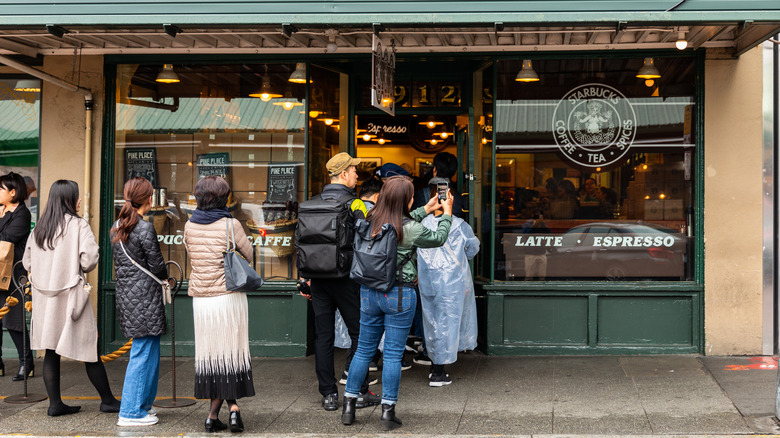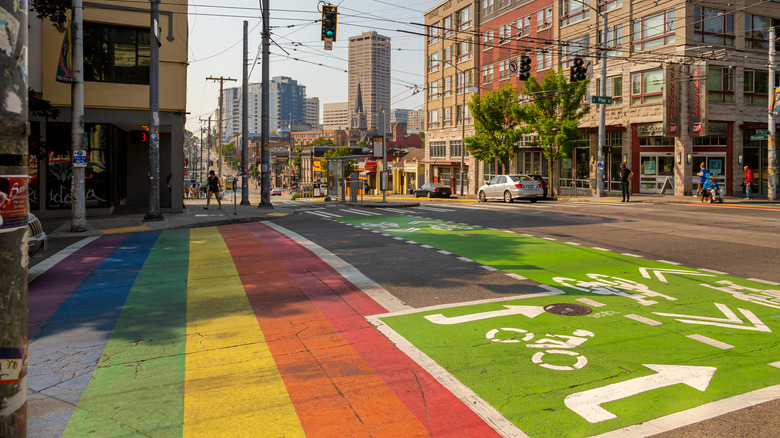What Made Starbucks' Secret Roy Street Coffee & Tea Special?
Back in 2009, Seattle's Starbucks locations were closing one by one (per Seattle Pi). The company's profits were falling due to the recession, and the shops it closed weren't doing well (via CBS). It seems the coffee giant could not compete in a city with one of the country's highest number of coffee shops per capita, according to Coffee Affection. For them to make it in Seattle, Starbucks knew that they'd have to get experimental. Perhaps that's part of why the "stealth Starbucks" was created. What's a "stealth Starbucks," you may ask? It's a Starbucks in disguise as an indie café.
A stealth Starbucks ditches the famous green logo and trendy drinks that, according to Reference, attract roughly 60 million customers to their locations around the world each week, and instead takes on the look and feel of a small, locally-owned café. However potentially disingenuous the concept was, Starbucks' undercover café on Capitol Hill, Roy Street Coffee & Tea, won the hearts of Seattleites — but how? In a city that values independent roasters (via Culture Trip), Starbucks chose to ditch its big-corp vibe, and it worked.
Starbucks' Roy Street Coffee & Tea: A community hub
The undercover operation sold different items than the standard Starbucks menu, with local artisanal cheeses, pour-over coffees, wine, beer, and legit latte art (per Seattle Times). Similarly, the café's locale in the Capitol Hill neighborhood offered more than just historic architecture on a street populated by restaurants, nightclubs, and music venues. To this day, nearby Cornish College of the Arts and the area's vibrant LGBTQ+ spirit (via The Gay Globe Trotter), give the neighborhood its reputation as the heart of the city's counterculture.
In a neighborhood also known as "the epicenter of coffee culture," per Trip Savvy, it was only natural that these two communities combined — and the now-closed Starbucks location was the place for just that.
After announcing the news of its closure in 2019, as the company shifted its gears towards Starbucks Reserve (per Better Marketing), more than 600 customers signed a Change.org petition to show Starbucks that the Capitol Hill space was more than a coffee shop, it was "a pillar for the Capitol Hill community." According to the petition, what was essentially an experiment for the coffee empire was viewed by locals as a refuge for people seeking inclusivity and acceptance (via Change.org). While other stealth Starbucks locations in New York, Austin, and another in Capitol Hill were short-lived (per Eater), the unique culture found at Roy Street Coffee & Tea was a perfect fit, creating an inclusive atmosphere for the community to gather and connect.

